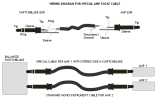I am totally down to try it, I have seen so many different speaker set ups and recently saw Neal shone using these really special loud speakers but I have also seen mission engineering i am going to need to use this device a couple different ways and I would love to try it out in all the ways listed can you tell me what the top cabs and power heads are for this and secondly which FrFr is the one to get?I was just thinking the same thing.
And admittedly, I've read the thread fast, but it seems like you've spent some real money in your search to integrate modelling into your rig, and with wanting more convenience for gigging, it sounds like you're looking for a lighter solution overall. But I didn't notice much in the way of just fully embracing the modelling, and getting some quality power and monitoring components.
I've read many posts here of guys running powered FRFR, and others using power amps and cabs, in live settings, and totally feeling and hearing it sound just as good as a mic'd amp.
If I were you, I'd just ditch the 4cm, and go all-in, and focus on getting the right end-of-chain gear that'll make you happy about giving up the tube amps. Many others have done it, and say they've never looked back. (I can't personally comment on that from my own experience because that's not how I use the Fractal stuff right now.)
Also is there a person I can hire to truly capture my current rigs in the fractal world
I think a aha moment just happened the RJM would probably fix some of these issues and allow me to isolate to hear it too. Maybe some ways to get around some this with just being clever with switching so the effects are truly bypassed when I’m not using them

